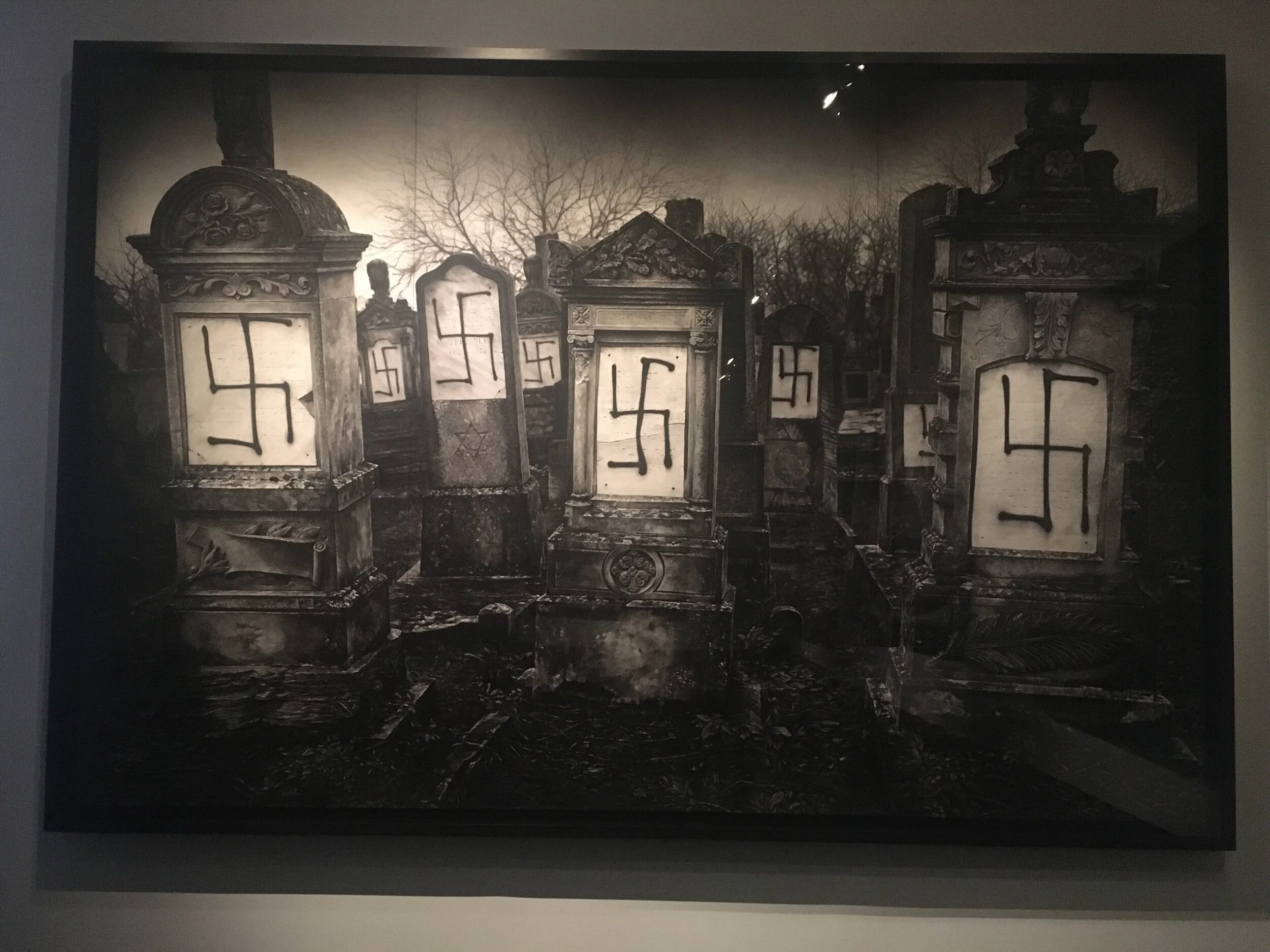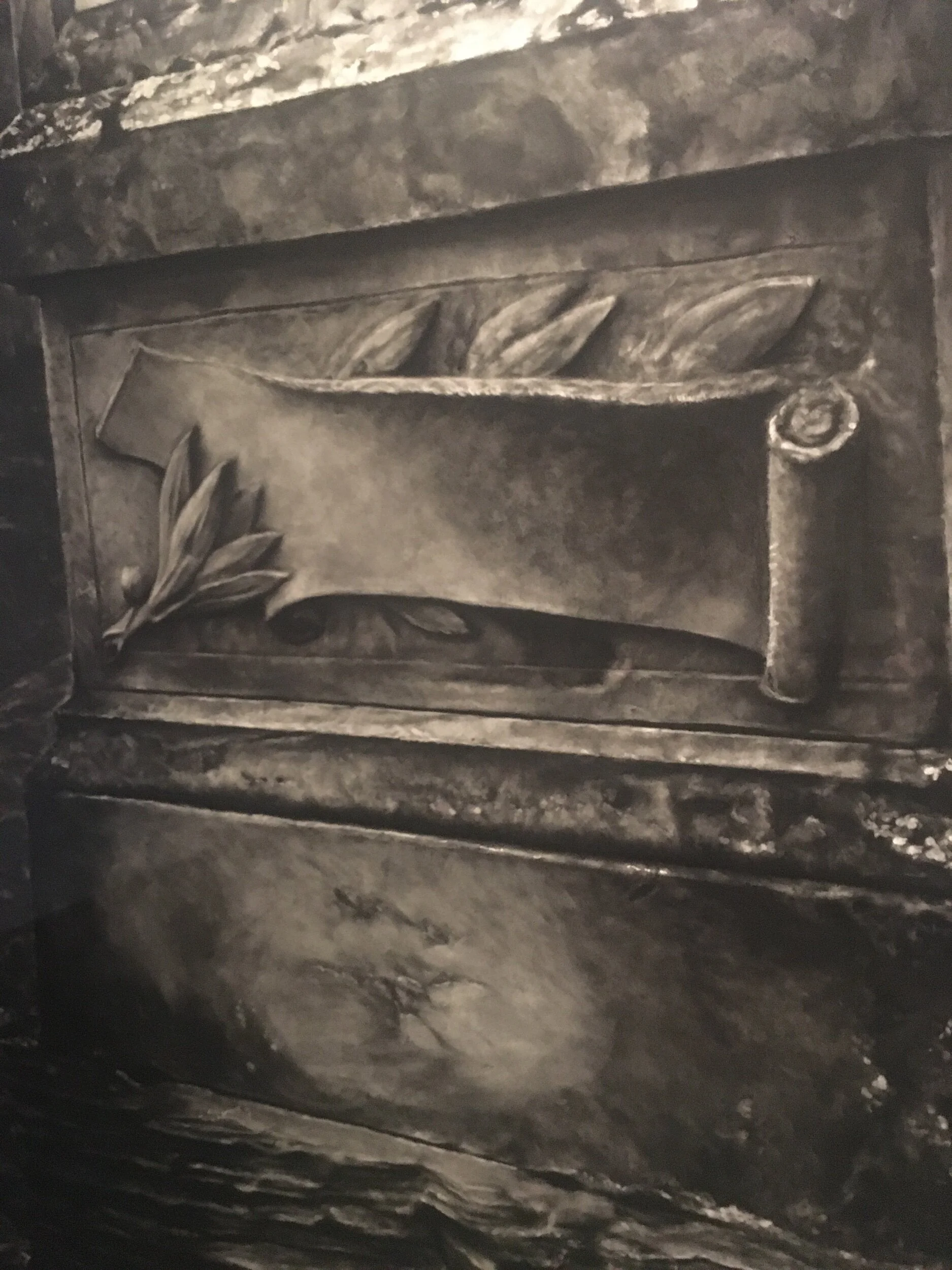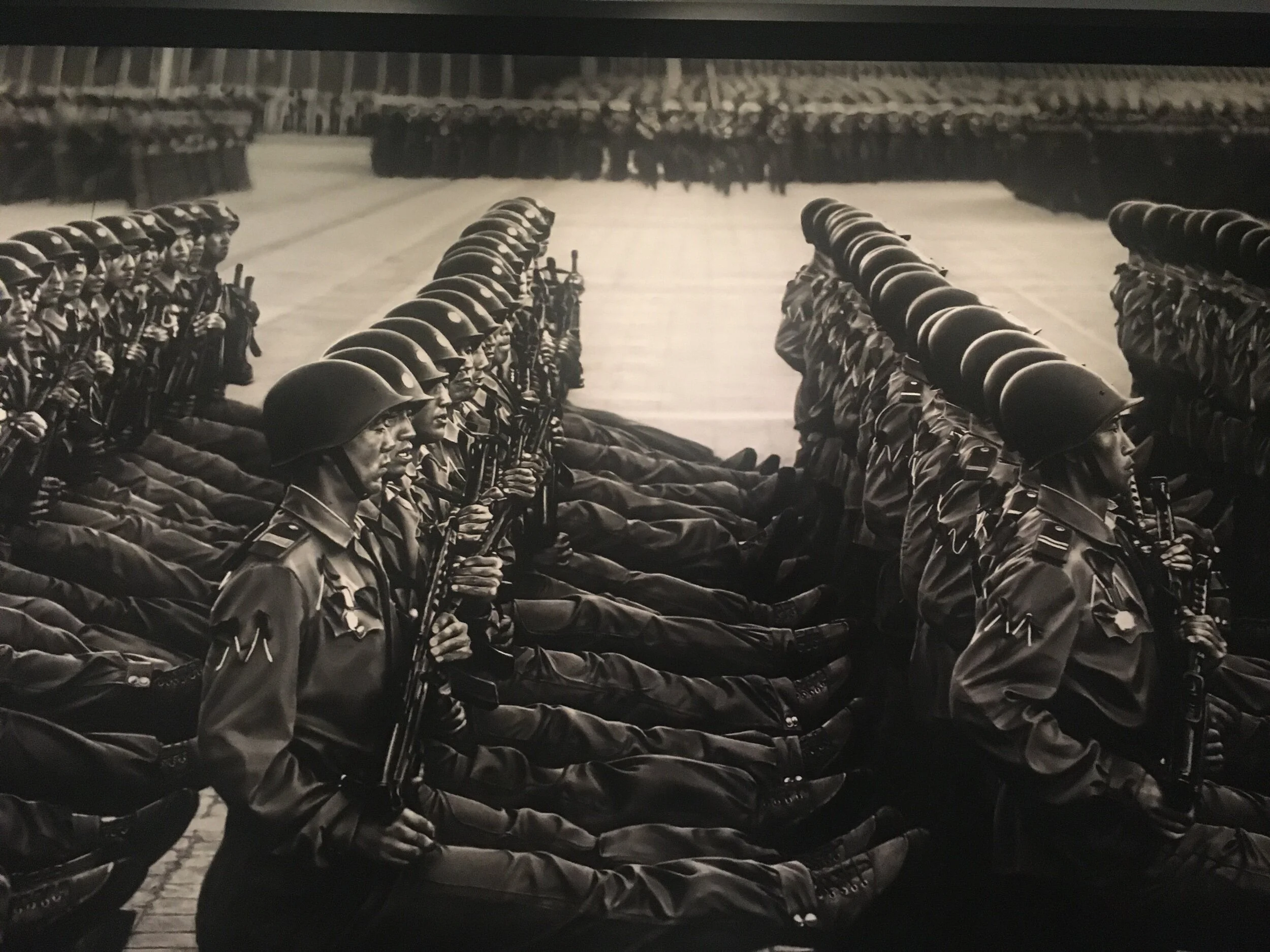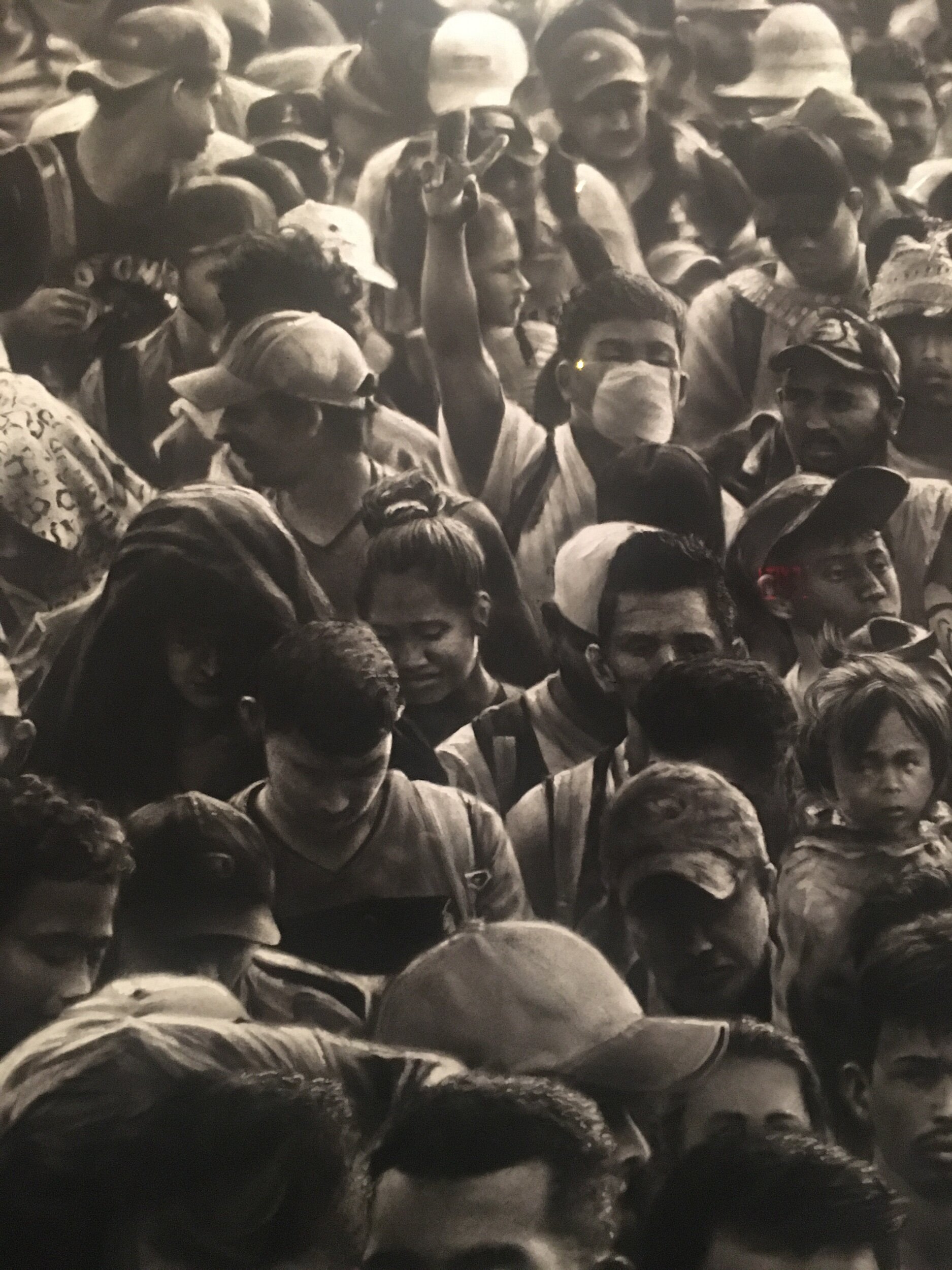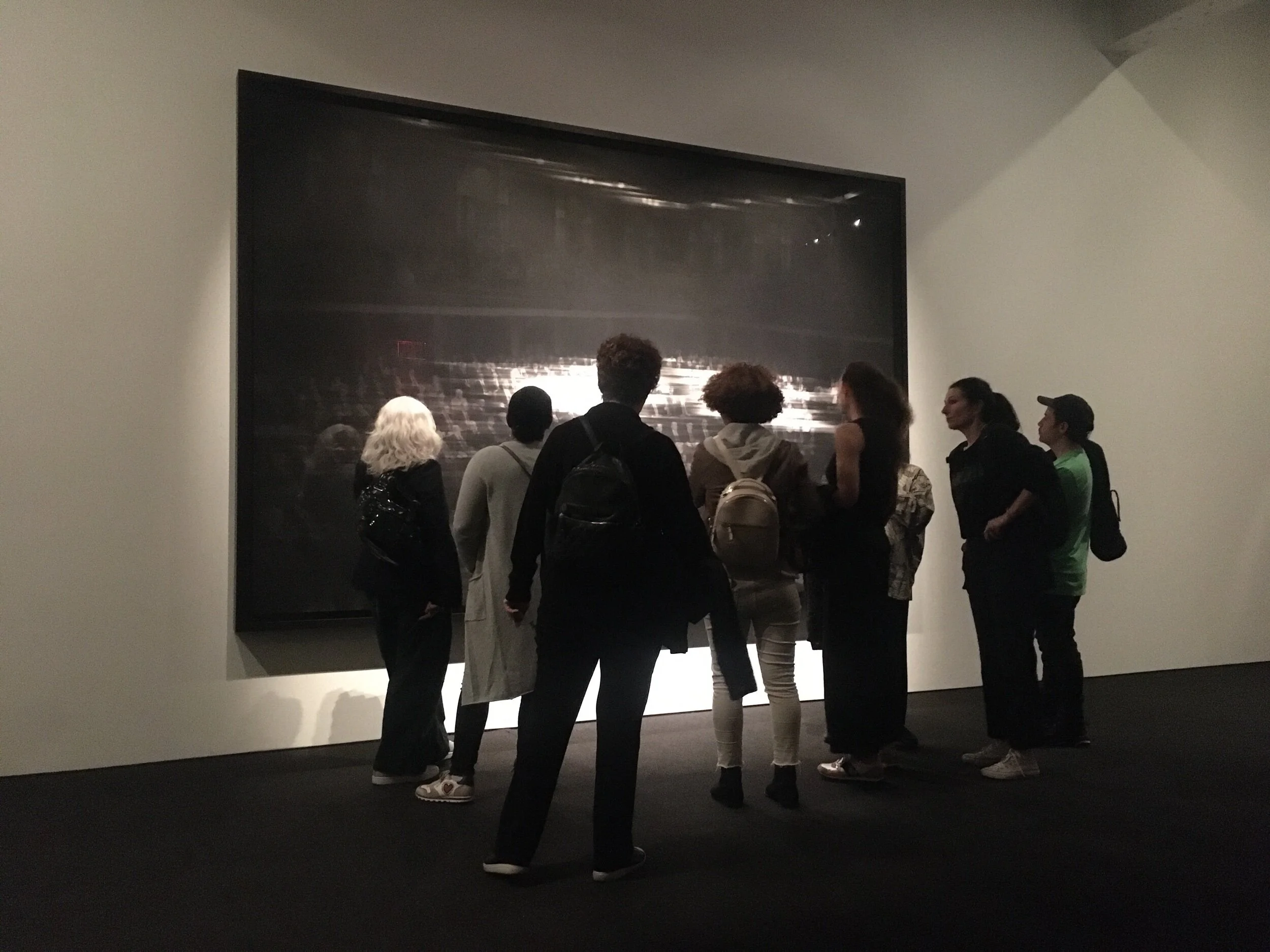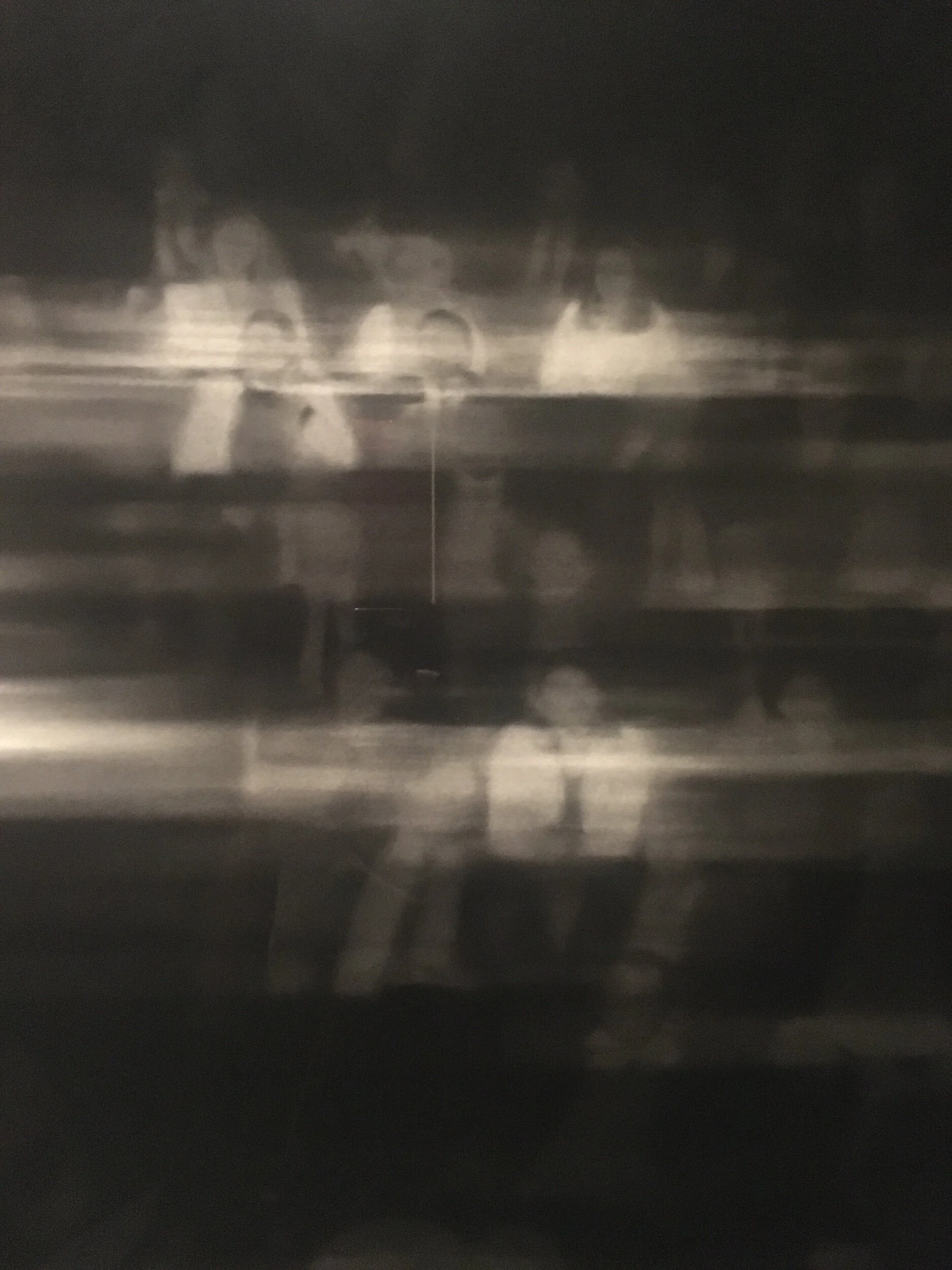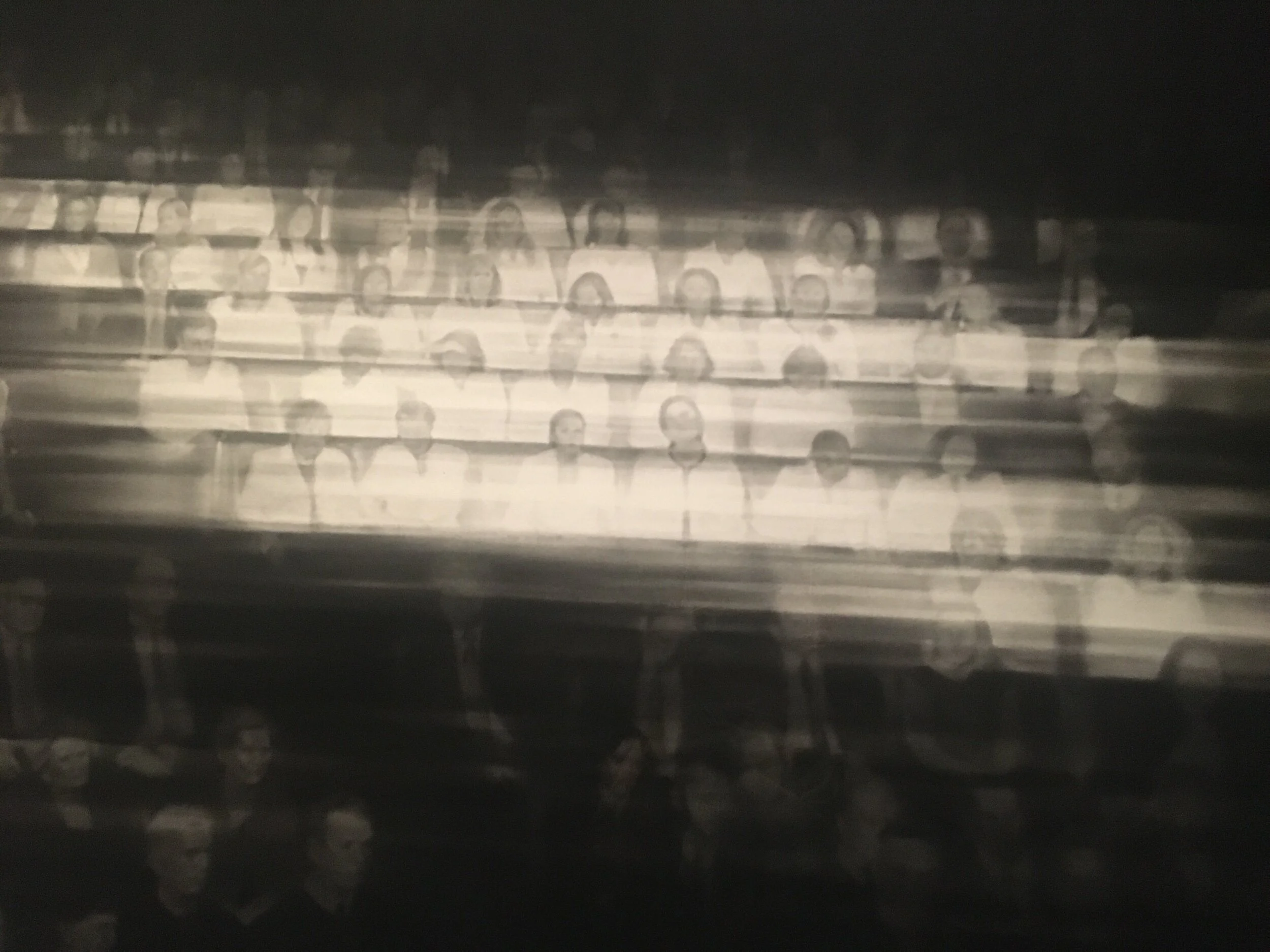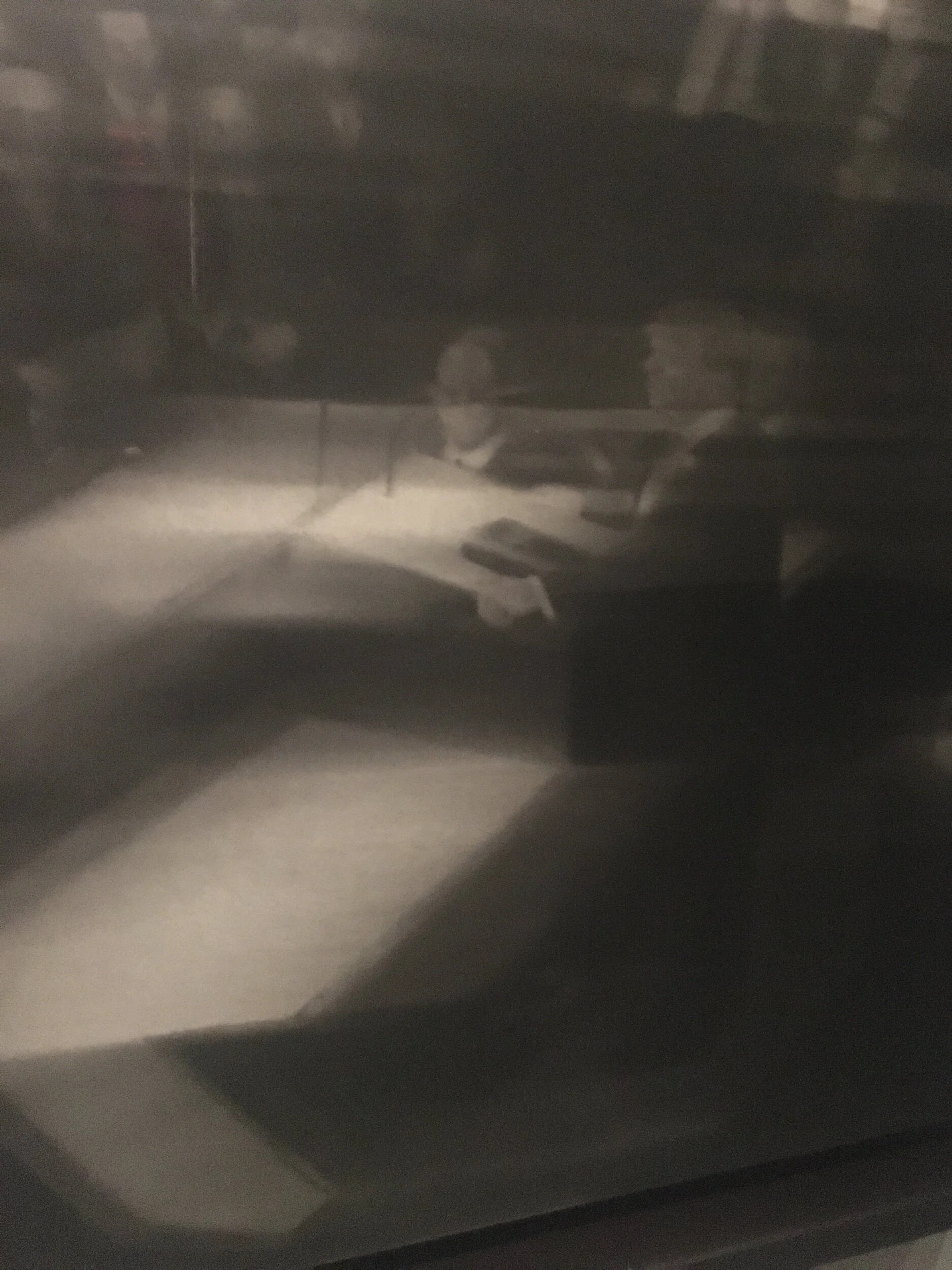Capturing the Political in Charcoal
Robert Longo has an innate talent for creating hyper-realistic compositions of politically-charged scenes that can easily be mistaken for photographs. I certainly made that error when first encountering his work at The Broad in Los Angeles. Untitled (Black Pussy Hat in Women’s March) (2017) appeared to be a large scale photograph of women in droves, marching down a city street in protest. As a viewer, we are a part of the tight-knit crowd marching into the distance. We are directly behind a young woman with pigtails wearing a puffer jacket, and a now iconic pussy hat, who is both the largest and central figure in the composition. After a second glance at the wall label, I was struck by how my opinion of the work changed and my admiration for it grew.
Charcoal? Who would have the patience to create a work this detailed and flawless in such an unforgiving medium and at that size?
In a 2017 interview with GARAGE, Longo said of the medium:
“I find it profound that charcoal is one of the most archaic mediums in existence, the medium of cave drawings, a 30,000-year-old medium. I like that I'm drawing with dust and powder and burnt material. When I first started working with it I really hated it. I thought it was incredibly imprecise.”
With every charcoal-made mark on the paper’s surface, a mix of small particles and dust accumulate around it. The unavoidable “mess” it generates makes his work’s crisp lines, abundance of gray-tones and pristine white spaces (which is simply the paper with no marks) just shy of a miracle, and a true testament to the artist’s skill as a draftsman. Longo has worked exclusively in charcoal for about twenty years. We should all be glad he chose not to abandon this harrowing type of drawing.
My most recent encounter with Longo’s work was the second half of his two-part exhibition at Metro Pictures, Fugitive Images, which closed last month. When entering the first dimly lit gallery, my mood immediately shifted into a complex jumble of despair and anger — they are political artworks after all. A North Korean military parade; swastikas freshly spray-painted on World War II era Jewish graves; African refugees stranded on a deadly raft at sea; a caravan of Central American migrants; and a distorted, TV-like image of a recently assassinated journalist, all loomed around the gallery space. Each work was now a permanent and documented reminder of the most recent “plagues” humanity has unleashed upon itself. During the artist’s gallery talk, Longo commented that he did not want to create this type of work, but he felt “compelled” to, adding that “artists have the ability to tell truths in a time of untruth.”
Fortunately, not every “truth” yielded a negative tone. Untitled (State of the Union; Washington, D.C., USA; February 5, 2019) (2019) appeared to welcome each visitor as they entered the second room. This drawing is based on images from President Trump’s second State of the Union speech, where elected female members from (the most inclusive-to-date) House of Representatives wore white to represent the suffragette movement. The drawing has a ghostly and hazy appearance that permits each white outfit to glow like moonlight against the shadow-like haze. Longo’s attention to detail coaxes viewers in close to perceive (what perhaps are?) portraits of each congresswoman. I admittingly scanned the picture plane to identify Alexandria Ocasio-Cortez, but to no avail. One apparent portrait is Trump, who is relegated to the shadows of the bottom right, behind the podium. It appears that the artist has seemingly “illuminated” the nonverbal message of the congresswomen, in order to eclipse the president’s speech. What a powerful statement.
If you missed Robert Longo’s show at Metro Pictures, his work is collected by many museums worldwide including: MoMA in New York, The Broad Museum in Los Angeles, Tate Collection in London and Stedelijk Museum in Amsterdam, to name a few. However, if you’re heading there with the sole intention of seeing Longo’s work, please call ahead to make sure it’s on view. Drawings tend to be more delicate and require stricter conservation than paintings — i.e. lower light to protect the fragile nature of a work on paper.
Quick link to Robert Longo’s website here.

